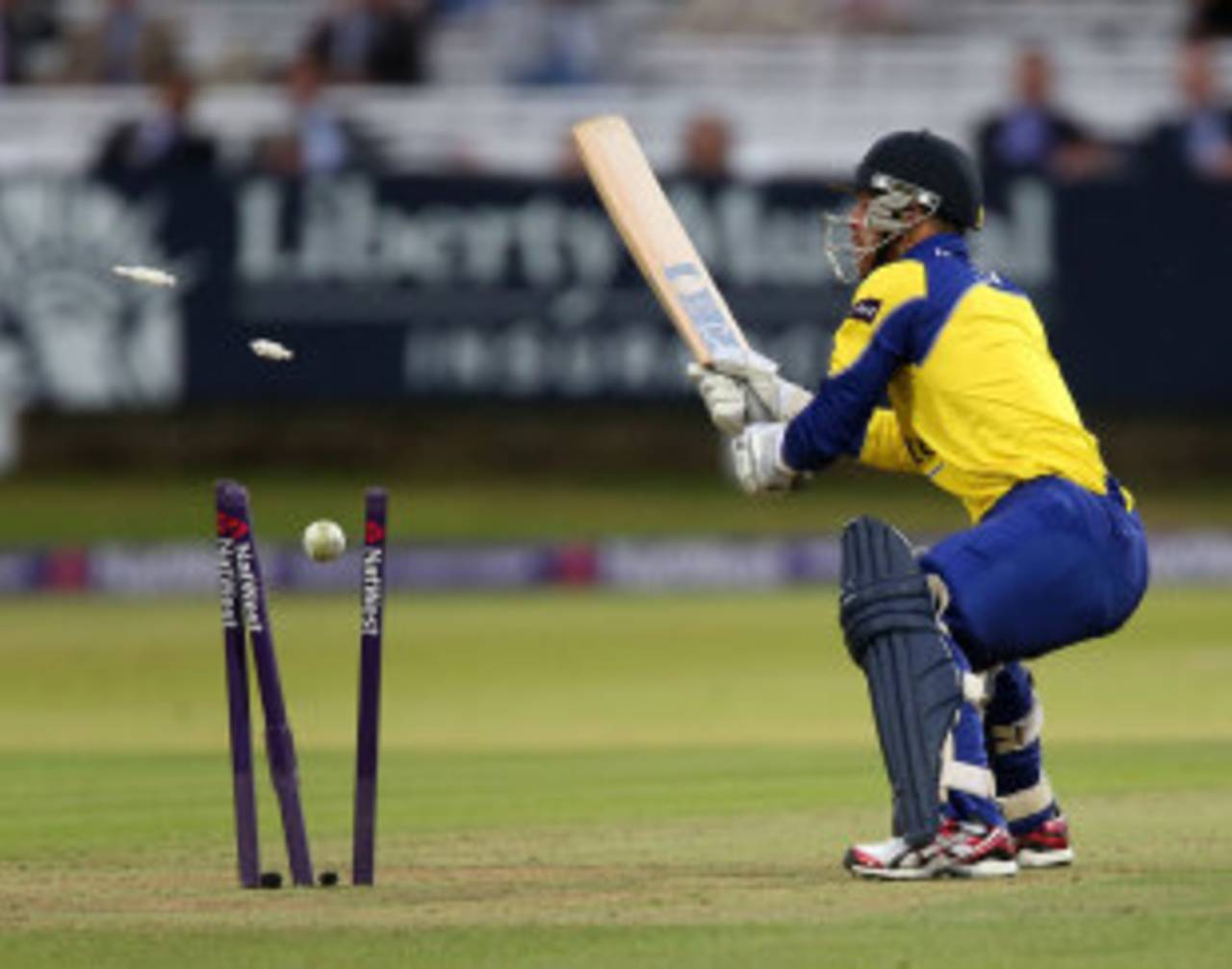"Take me to Lord's to see someone I've never heard of, nurdle someone else I've never heard of off their legs for a single," is an expression no child has ever uttered.
The NatWest T20 Blast is not for the purist. It is not about subtlety. It is not, really, even about winning. It is about attracting new spectators to the game. It was re-launched only a few weeks ago to double - yes, double - attendances over the next three or four years.
So it is essential it contains the biggest names, boundary hitting and fast bowling to appeal to those who are left untouched by longer forms of the game. It is essential it provides fast-moving, attractive, entertainment.
So it was a shame that, on the day it became clear that the ECB were not going to honour their commitment to back the re-launched competition by making England players available, that the pitch at Lord's for Middlesex's match against Gloucestershire should provide so little chance of entertainment to a crowd of 14,000.
Dry, cracked and uneven, it provided too much assistance for the bowlers and produced cagey cricket lacking the big hitting or eye-catching bowling that could sell the game to a new audience. It was like going to watch The Rolling Stones play their greatest hits and instead find them experimenting with an evening of Belgian jazz.
Matches like this present a chance to appeal to a new audience; a chance to inspire new supporters and new players. With very little cricket available on free-to-air TV, it is the shop window for our game.
But, all too often, the English game is self-harming with this sort of surface. A surface lacking the pace and bounce to encourage attractive cricket. A surface encouraging canny medium-pacers and dart-like spinners. A surface that creates boring cricket.
All too often, new spectators will taste the game once and never return.
And it may well get worse. Pitches for the 50-over competition later in the season may well be even more tired and dry. They will offer even more wretched entertainment. They will damage cricket even more.
It is not entirely the groundsmen's fault. They are obliged to prepare so many pitches during the course of a season that they simply run out of space. They have no choice but to re-use wickets, particularly when the requirements of broadcasters insist that games are played towards the centre of the square.
The new drainage installed at grounds around the country might be relevant, too. There is increasing evidence to suggest that groundsmen are simply unable to retain moisture in pitches and, as a consequence, there is a lack of pace and more assistance to spin than might be required. It is a factor that might become increasingly relevant in the Investec Test series against India.
In the longer-term the ECB are likely to consider centrally-contracted groundsmen. Then they can demand pitches for the benefit of the national game as a whole, not just the home county. But the ECB will also have to fund groundsmen adequately to ensure they have the required resources. This is too important an area of the game to skimp.
Pitches like this will kill the game. More than match-fixing, chucking or the absence of cricket from free-to-air television, poor pitches will destroy the product and turn away spectators. The game has to do better and for Lord's, the home of cricket, to provide such a surface for such an encounter, is bitterly disappointing.
George Dobell is a senior correspondent at ESPNcricinfo
